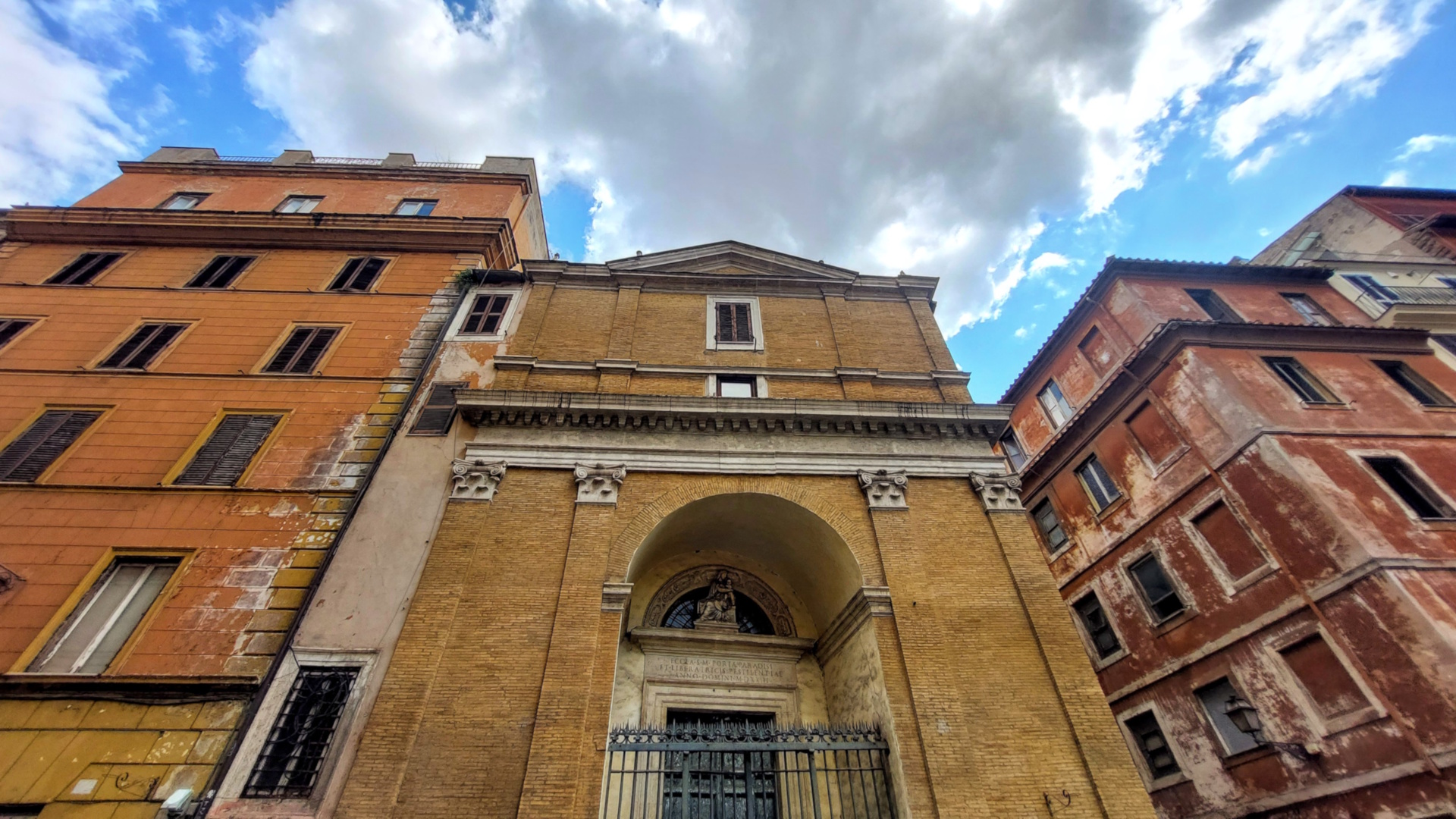
Comme pour l'imposante église de San Giacomo in Augusta, de l'autre côté du même îlot urbain, l'histoire de la petite église donnant sur la via Ripetta est également liée aux événements séculaires de l'hôpital San Giacomo degli Incurabili, l'un des plus anciens de la ville avec Santo Spirito in Sassia et Santissimo Salvatore ad Sancta Sanctorum.
Les informations relatives à sa construction sont incertaines, mais l'église est sûrement documentée au XIVe siècle, époque à laquelle remonte la fondation de l'hôpital auquel elle était annexée. Dans le premier quart du XVIe siècle, lorsque la citadelle hospitalière (entre-temps élevée au rang d'Archiospedale degli Incurabili en raison de sa spécialisation dans le traitement des patients atteints de syphilis, considérés comme incurables) fit l'objet d'importants travaux de rénovation et de modernisation, la petite chapelle à l'arrière du complexe fut également agrandie et embellie sur un projet d'Antonio da Sangallo le Jeune, grâce notamment à un legs important du prélat espagnol Antonio de Burgos. L'épigraphe qui se trouve encore aujourd'hui sur la façade témoigne de sa fondation et de sa fonction.
Son nom actuel remonte également à la phase du XVIe siècle de l'église, peut-être en raison de sa proximité avec l'une des portes des murs qui entouraient le voisin complexe du Mausolée d'Auguste, appelées « paradiseiois » (du grec parádeisos, jardins), ou à l'ancien cimetière de l'hôpital, fermé en 1836 pour des raisons sanitaires suite à l'épidémie de choléra. Utilisée pour les funérailles, l'église était donc pour les fidèles le seuil à franchir avant d'accéder au lieu du repos éternel, avec l'espoir du paradis. À partir de 1644, à la suite du legs et des dispositions testamentaires du médecin Matteo Caccia, l'église fit l'objet d'une nouvelle rénovation : sa structure d'origine fut modifiée, sans toutefois être altérée, et la décoration intérieure fut réalisée selon le plan de Giovanni Antonio De Rossi.
Précédée d'un petit portique, l'originale façade à deux ordres, conçue par Antonio da Sangallo le Jeune, est un exemple d'architecture de style Renaissance. Un haut-relief d'Andrea Sansovino représentant une « Vierge à l'Enfant » est placé au-dessus du portail. Le plan octogonal avec un presbytère profond et deux chapelles latérales est le résultat de la transformation effectuée au XVIIe siècle par Giovanni Antonio De Rossi. L'intérieur est richement décoré de stucs, de marbres polychromes, de sculptures et de fresques réalisées au XVIIe siècle. La décoration de l'église est complétée par les monuments funéraires des deux bienfaiteurs Antonio de Burgos (datant de 1526, attribué à Baldassarre Peruzzi) et Matteo Caccia (réalisé par Cosimo Fancelli en 1645), placés au-dessus des deux portes qui flanquent le maître-autel.
Photo turismoroma
Informations
The church is a place of worship auxiliary to the Church of St. James in Augusta, so for visiting procedures, please contact the Church of St. James in Augusta at the contact details above.
 Condividi
Condividi
Location
Pour connaître tous les services d'accessibilité, visitez la section Rome accessible.











































